Grauer’s Gorilla Orphan Ihirwe Returns Home to DRC
By Gorilla Doctors Staff on Monday, May 19th, 2014 in Blog.Two years, nine months and eleven days after orphan Grauer’s gorilla Ihirwe was rescued from poachers at the Rwanda border town of Gisenyi, the young female gorilla finally returned to her home country of the DRC. Ihirwe was airlifted by a UN helicopter on May 19th to the GRACE center in Kasugho, a remote region of northeastern DRC, where she will join a group of 13 orphaned Grauer’s gorillas and her time as a lone infant will finally come to an end. The operation was coordinated by a coalition of conservation partners including the Gorilla Doctors, Congolese Wildlife Authority (ICCN), Virunga National Park, Gorilla Rehabilitation and Conservation Education Center (GRACE), Dian Fossey Gorilla Fund International (Fossey Fund), Great Apes Survival Partnership (GRASP), Greater Virunga Transboundary Collaboration (GVTC) and the Rwanda Development Board (RDB).
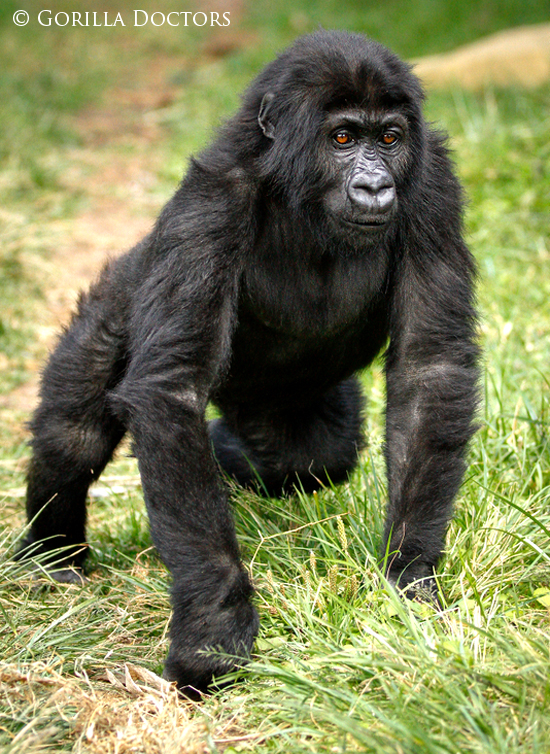 Grauer’s Gorilla Orphan Ihirwe. Photo Credit: Nelis Wolmarans
Grauer’s Gorilla Orphan Ihirwe. Photo Credit: Nelis Wolmarans
Looking Back
“Ihirwe” which means “luck” in the local Kinyarwanda language was rescued on August 7, 2011 after police arrested a group of Congolese and Rwandan men attempting to smuggle the infant across the border from DRC into Rwanda. Virunga National Park officials called the Gorilla Doctors to the scene to assess the sickly, terrified infant. “The Gorilla Doctors team arrived at the Ginsenyi police station around 10pm that night to find a very stressed, exhausted infant gorilla curled up in a tight ball in a jail cell” said Dr Jan Ramer, Regional Manager.
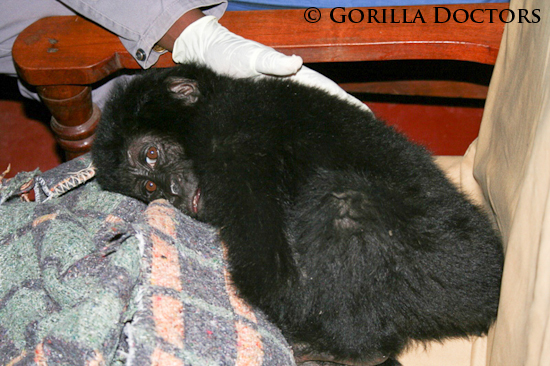 Infant Ihirwe was sickly and terrified at the time of her rescue from her captors in Gisenyi, Rwanda.
Infant Ihirwe was sickly and terrified at the time of her rescue from her captors in Gisenyi, Rwanda.
Ihirwe was brought to the Kinigi orphan care facility near the Gorilla Doctors Regional Headquarters in Rwanda. Just two weeks prior, six Grauer’s gorilla orphans residing there had been transferred to the GRACE center and the caretakers were ready to receive the new arrival. With a cough and a runny nose, Ihirwe was also malnourished from being fed only sugar cane for the previous two weeks by her captors. Drs. Jan, Jean Felix and Noel gave Ihirwe a thorough exam, collected samples for testing and started her on medications to improve her health.
Ihirwe, learning to trust her new doctors at the Kinigi facility in Rwanda.
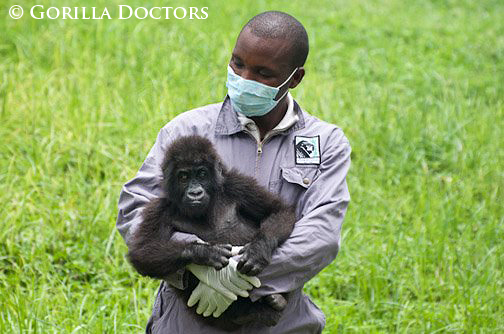 Infant Ihirwe being held by Dr. Noel at the Kinigi Orphan Facility in Rwanda.
Infant Ihirwe being held by Dr. Noel at the Kinigi Orphan Facility in Rwanda.
As the months passed by, Ihirwe slowly regained her health and began to grow into a bold and feisty youngster. She learned to depend on her round-the-clock caretakers for comfort and support and easily trusted her doctors for routine exams and treatment. At almost two-years-old, the rambunctious infant fell from a tree in her enclosure, knocking out her two front teeth. Drs. Dawn and Noel treated the infant after her accident and gave her antibiotics and pain killers to help speed her recovery.
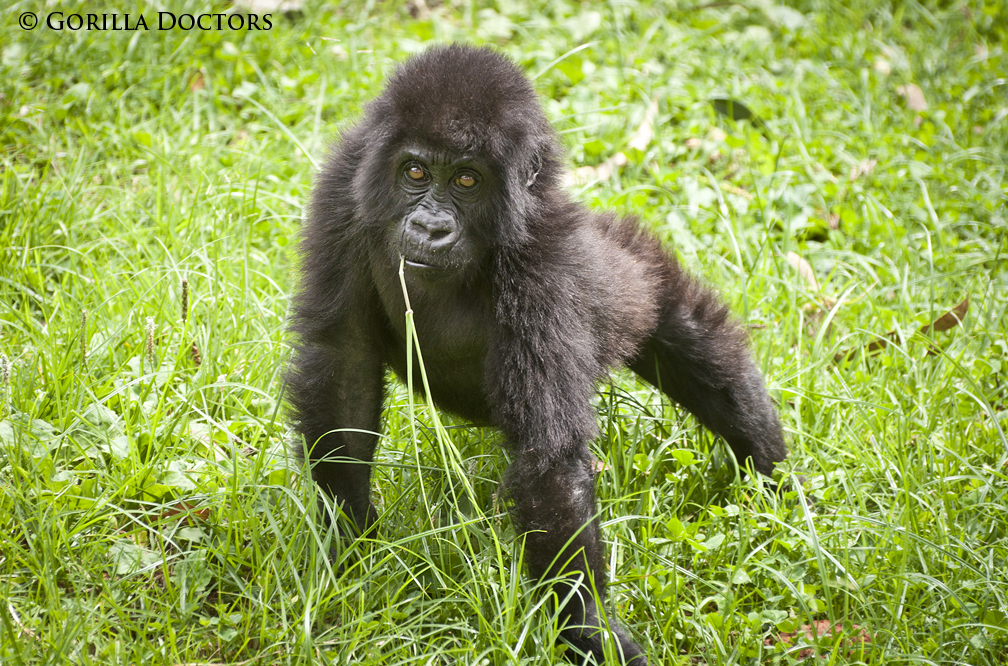 Infant Ihirwe, gaining confidence and strength with each passing day.
Infant Ihirwe, gaining confidence and strength with each passing day.
Initially, there was some confusion about Ihirwe’s subspecies because the poachers claimed she had been taken from the Bukima area of Virunga National Park, home to a mountain gorilla population. However, some people believed Ihirwe’s face looked more like a Grauer’s gorilla. The only way to know for sure was DNA testing. Gorilla Doctors collected blood, feces, and hair samples from Ihirwe and sent them to the Max Planck Institute for Evolutionary Anthropology in Germany for analysis. The results came back that Ihirwe was indeed a Grauer’s gorilla, thus deciding that she would eventually be moved to the GRACE center where she could join other orphaned gorillas of her own subspecies.
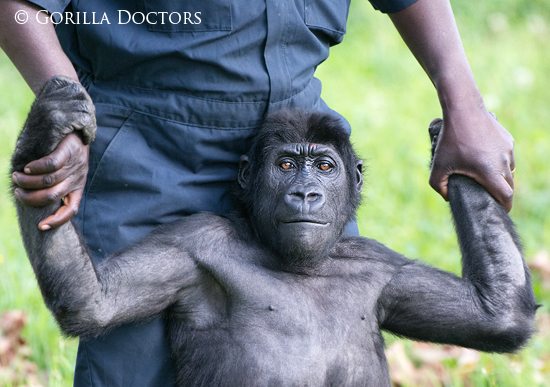 Grauer’s gorilla orphan Ihirwe with her caretaker at the Kinigi Orphan Facility. Photo Credit: Billy Dodson
Grauer’s gorilla orphan Ihirwe with her caretaker at the Kinigi Orphan Facility. Photo Credit: Billy Dodson
The Transfer
Bright and early on Monday morning, Drs. Jan, Jean Felix, and Noel drove to the Kinigi facility to prepare Ihirwe for her big move to GRACE. The Gorilla Doctors anesthetized her to collect final samples for testing and research, tested her for tuberculosis, and placed her in her crate for transport.
A large convoy comprised of staff from the Rwanda Development Board, the Dian Fossey Gorilla Fund International, and Gorilla Doctors made the one-hour drive to the Rwanda/DRC border. Still groggy from the anesthesia, Dr. Jan said that Ihirwe slept most of the way in the truck, but awoke at the border crossing as curious onlookers began to gather and try to snap photos. ICCN officials and local authorities were on top of crowd control though, and effectively dispersed the gathering people so as not to stress Ihirwe.
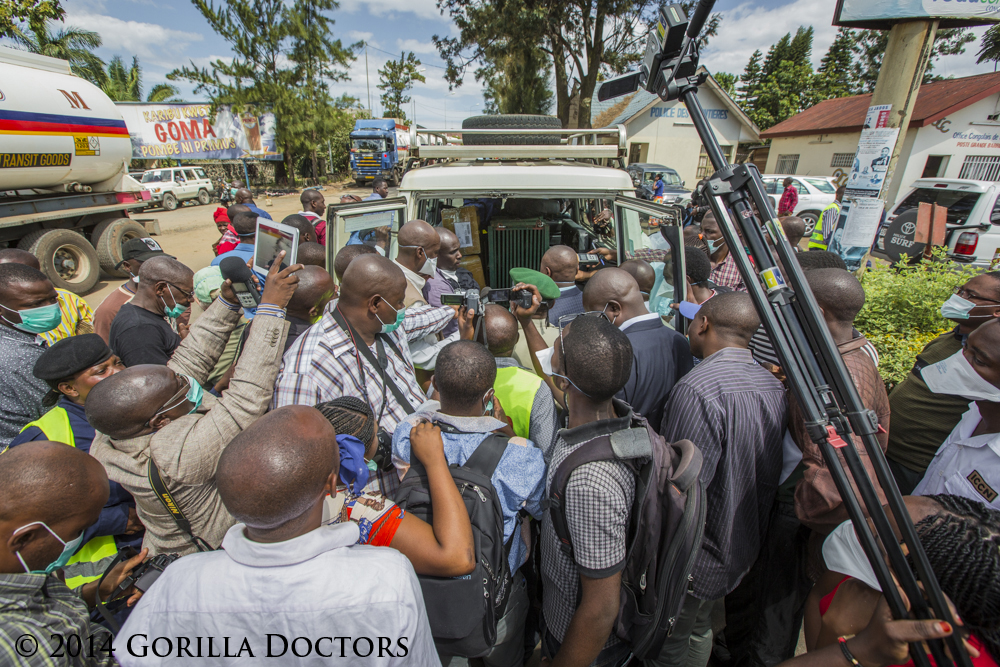 A crowd gathered as Ihirwe was taken across the border from Rwanda to DRC. Photo Credit: Marcus Westberg
A crowd gathered as Ihirwe was taken across the border from Rwanda to DRC. Photo Credit: Marcus Westberg
Once at the Goma airport, the Gorilla Doctors and Fossey Fund staff met with Yirga Huruy, the coordinator for the MONUC transportation. There were a few delays at the airport, but Yirga found a quiet place for Ihirwe to wait. Dr. Noel, Ihirwe’s primary veterinarian over the last 3 years, stayed with her for several hours, keeping her calm and feeding her bananas and water. Fortunately, she stayed relatively mellow throughout the transfer, and did not need to be sedated.
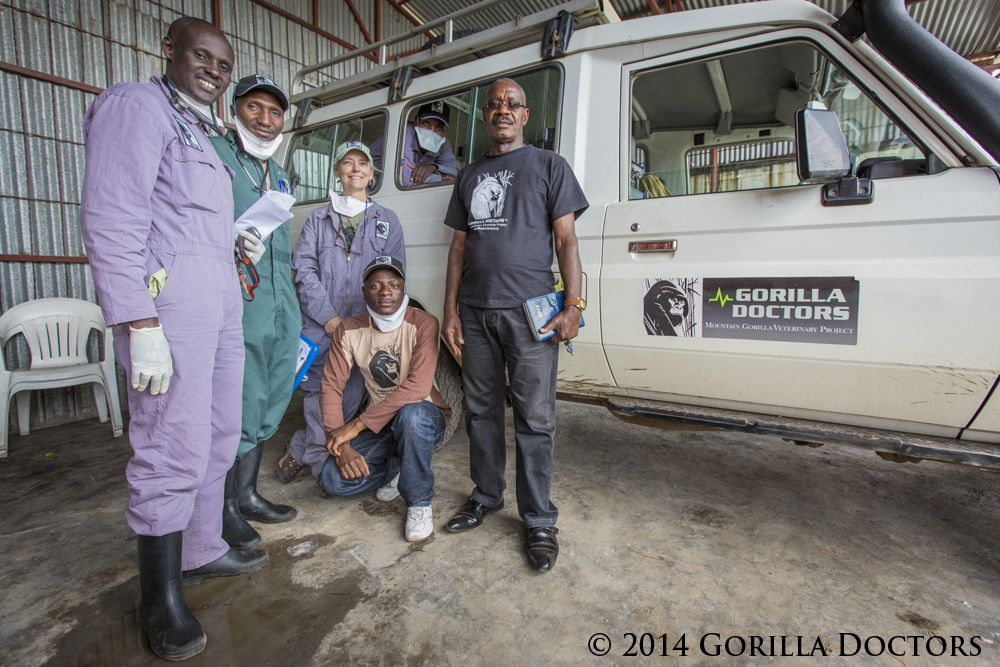 From left to right: Drs. Jean Felix, Eddy, Jan, Martin, Noel, and Jacques. Photo Credit: Marcus WestbergOnce the UN M-17 helicopter was readied, the team loaded Ihirwe’s crate in and strapped it down, with her doctors flanking the crate to monitor her condition throughout the flight.
From left to right: Drs. Jean Felix, Eddy, Jan, Martin, Noel, and Jacques. Photo Credit: Marcus WestbergOnce the UN M-17 helicopter was readied, the team loaded Ihirwe’s crate in and strapped it down, with her doctors flanking the crate to monitor her condition throughout the flight.
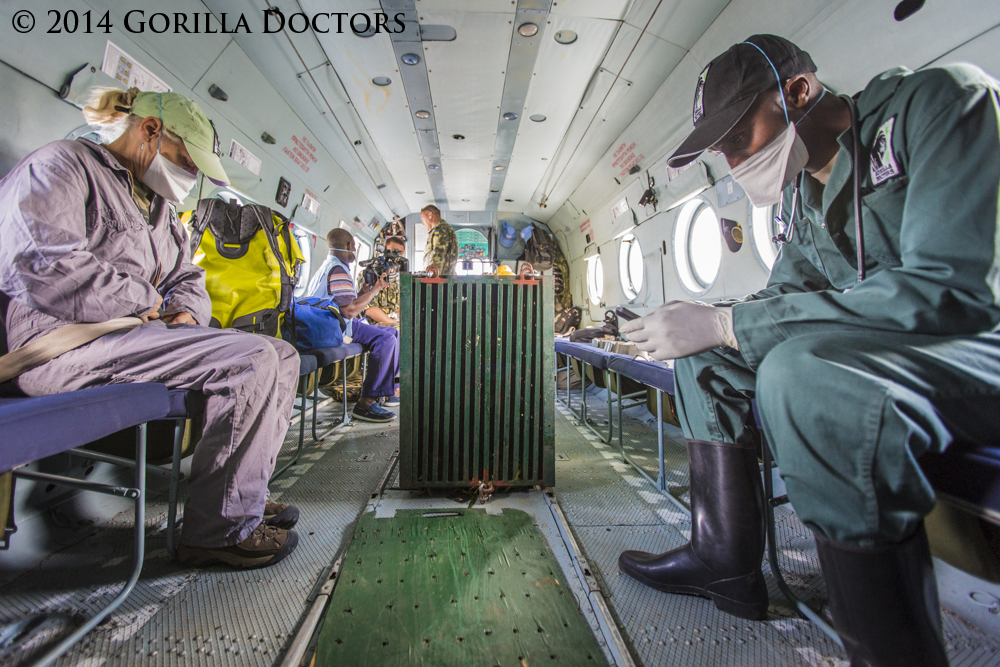 Drs. Jan and Eddy, along with UN soldiers inside the helicopter. Photo Credit: Marcus Westberg
Drs. Jan and Eddy, along with UN soldiers inside the helicopter. Photo Credit: Marcus Westberg
The MI 17 transport helicopter rescue was part of the U.N.’s regularly scheduled air traffic within the region as part of the U.N. Organization Stabilization Mission in DRC (MONUSCO) effort. This transport was arranged by the Great Ape Surival Partnership (GRASP). The flight reduced what would have a grueling 150-mile (250 kilometers) trip overland to less than two hours.
The helicopter landed in an area outside of Kusogho, eastern DRC, where there were no access roads. So, the team carried her crate about 400 meters to the GRACE truck, where she would continue her journey on to the sanctuary.
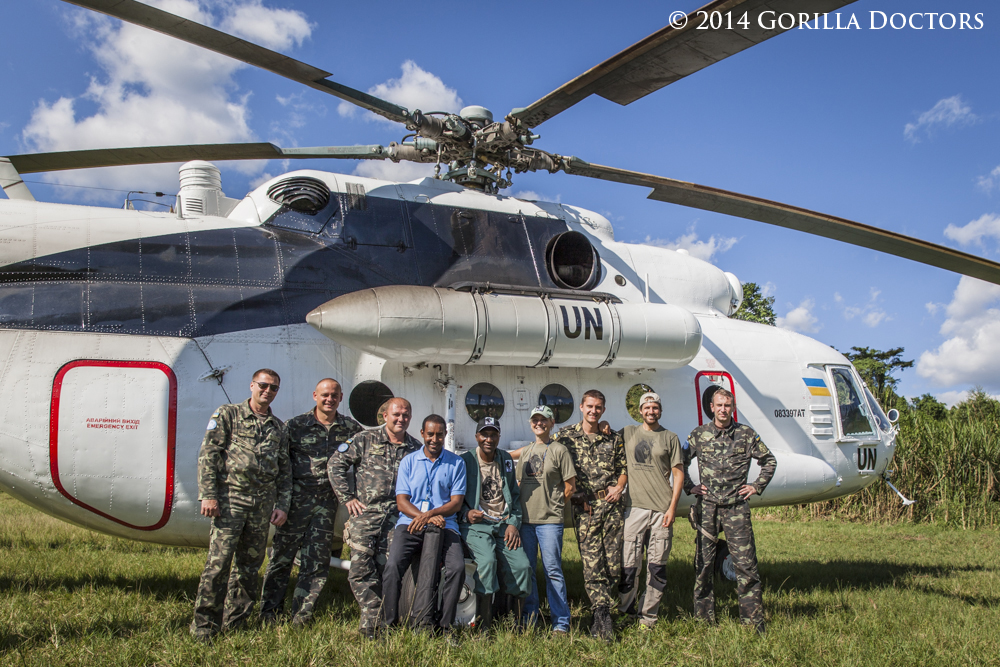 The Gorilla Doctors staff with UN soldiers in front of the Helicopter. Photo Credit: Marcus Westberg
The Gorilla Doctors staff with UN soldiers in front of the Helicopter. Photo Credit: Marcus Westberg
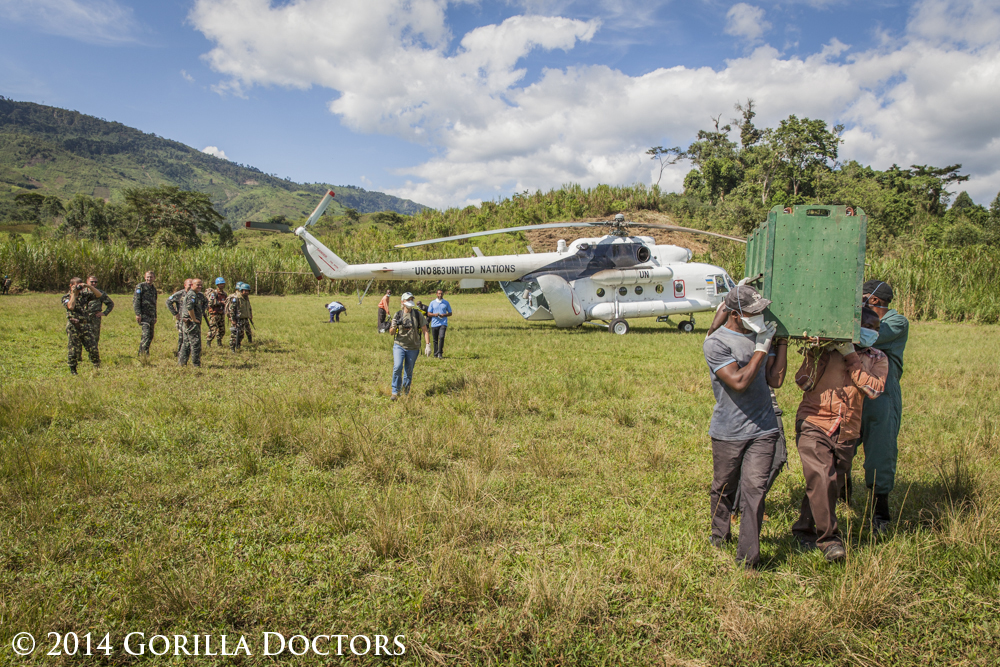 Carrying Ihirwe from the Helicopter to her new home at the GRACE center. Photo Credit: Marcus Westberg
Carrying Ihirwe from the Helicopter to her new home at the GRACE center. Photo Credit: Marcus Westberg
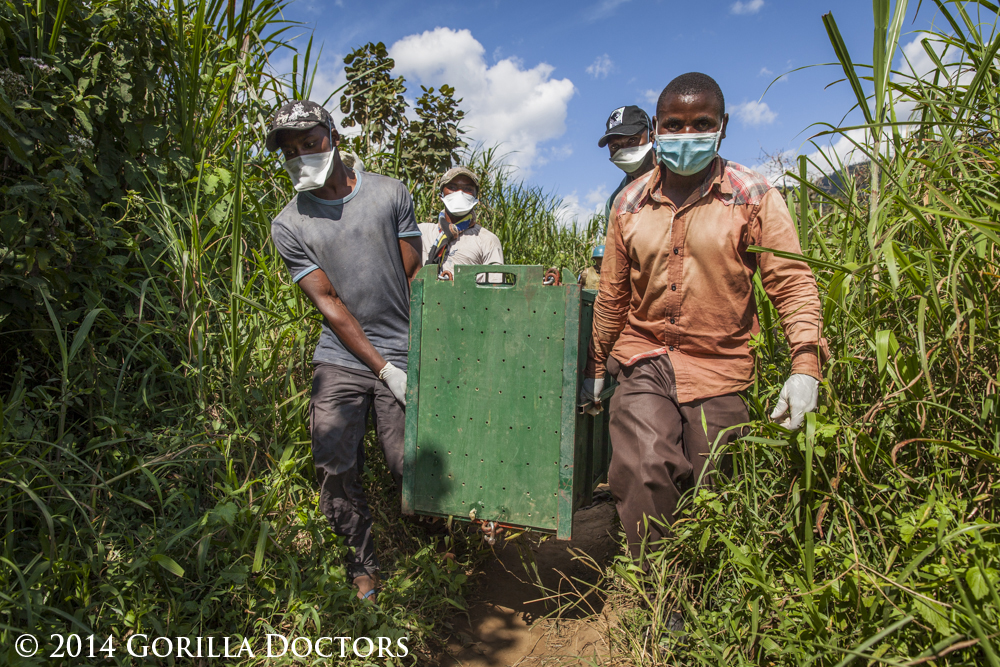 GRACE and Gorilla Doctors staff carry Ihirwe’s crate through the tall vegetation. Photo Credit: Marcus Westberg
GRACE and Gorilla Doctors staff carry Ihirwe’s crate through the tall vegetation. Photo Credit: Marcus Westberg
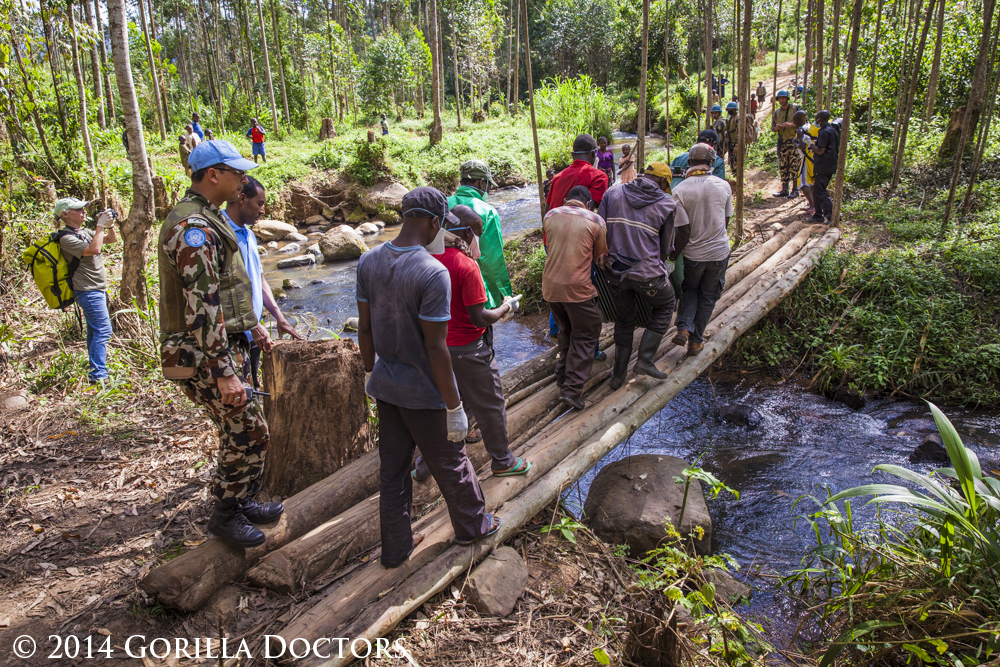 Staff carry Ihirwe across a bridge on the way from the helicopter to GRACE. Photo Credit: Marcus Westberg
Staff carry Ihirwe across a bridge on the way from the helicopter to GRACE. Photo Credit: Marcus Westberg
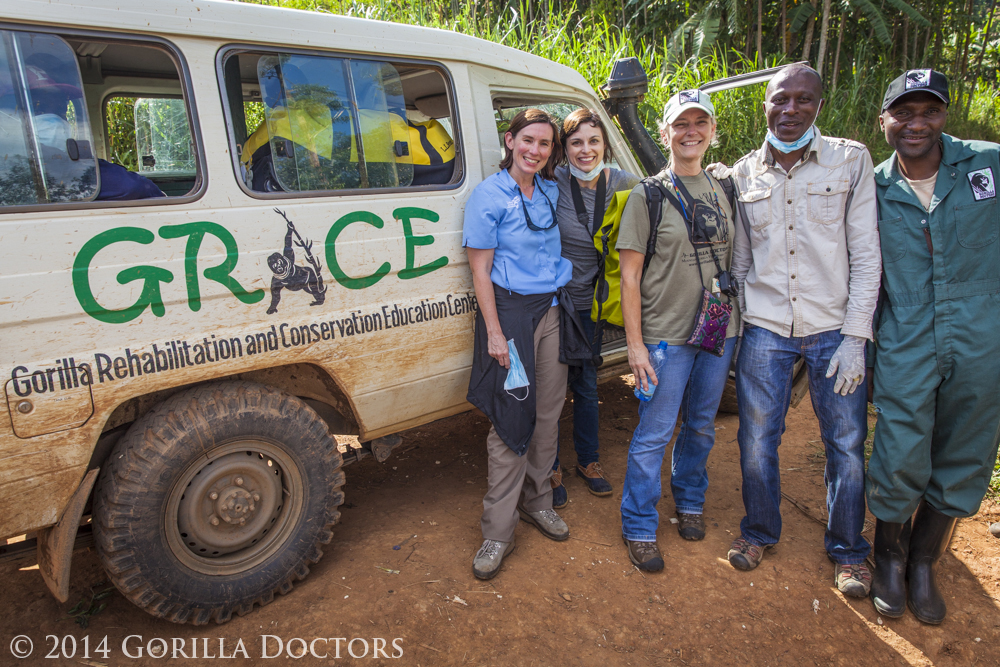 GRACE staff with Drs. Jan and Eddy. Photo Credit: Marcus Westberg
GRACE staff with Drs. Jan and Eddy. Photo Credit: Marcus Westberg
GRACE Executive Director Dr. Sonya Kahlenberg was waiting with her staff and Ihirwe’s new caretakers, Kambale and Gilbert, at the truck. The team said that Ihirwe immediately recognized Kambale, who spent time with her at the Kinigi orphan facility to help ease the transition to GRACE.
“The cross-border collaboration that helped bring Ihirwe home to DRC to be with other gorillas has been inspiring to behold, as it demonstrates the commitment of both countries to gorilla welfare and conservation,” said Dr. Kahlenberg. “GRACE is honored to have been part of this effort and looks forward to helping Ihirwe adjust to her new life.”
The day after the move, Dr. Kahlenberg shared this image of Ihirwe at GRACE and reported that “she was happily exploring the forest and is settling in very well with her caregivers… When I went out to the forest to check on them, Ihirwe was laughing hysterically as Kambale was tickling her. She is going to do great here.”
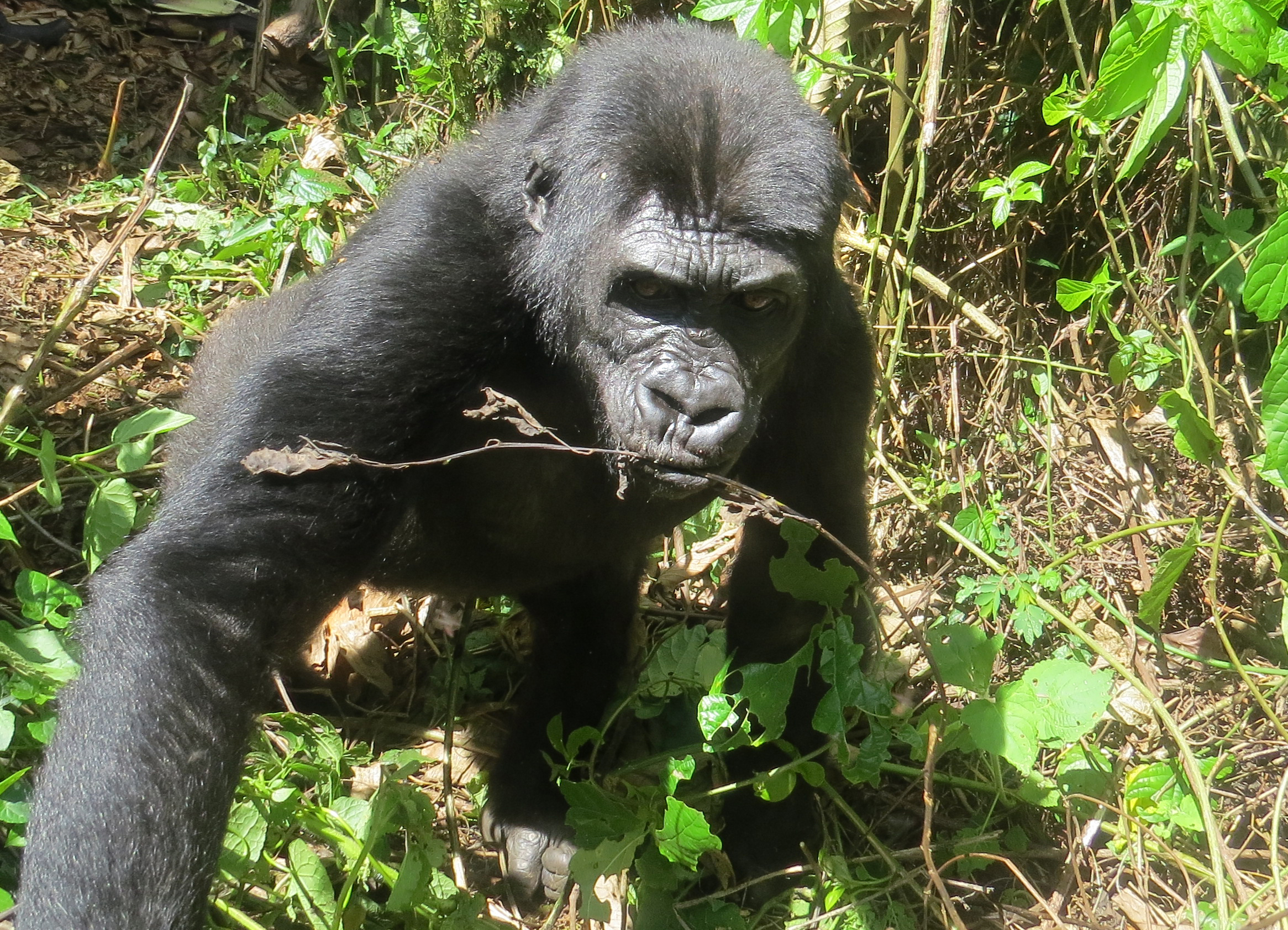 Ihirwe exploring the forest at the GRACE sanctuary. Photo Credit: © GRACE
Ihirwe exploring the forest at the GRACE sanctuary. Photo Credit: © GRACE
Ihirwe’s move was a fantastic transboundary effort amongst all conservation partner organizations and governments involved. We are so happy that Ihirwe will be able to join her new gorilla family at GRACE and will continue to provide updates as we receive them from GRACE staff. Best of luck to little Ihirwe! May she live a long and healthy life.
—-
Click below to watch a slideshow of Ihirwe’s remarkable transformation during her time in Gorilla Doctors medical care:


 Donate
Donate
